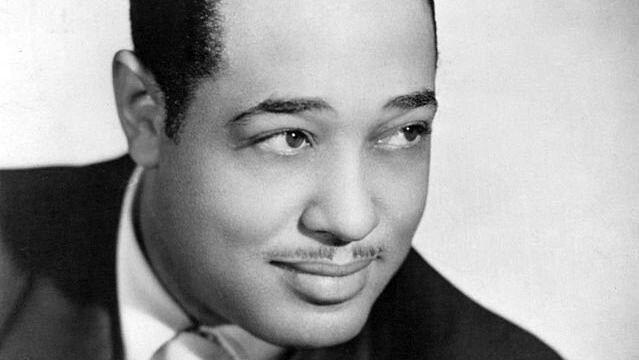“Take the A Train” isn’t just a song; it’s a journey. Synonymous with the legendary Duke Ellington, this iconic jazz composition, penned by his talented collaborator Billy Strayhorn, became Ellington’s signature tune, a recurring motif throughout his illustrious career, and remains a cornerstone of jazz music history. Its infectious melody and vibrant energy propelled Ellington and his orchestra to new heights of fame and fortune, solidifying its place as one of the most important pieces ever written in the genre.
Decades after its initial release, the story of “Take the A Train” took an intriguing turn when Garfield Gillings, a находчивый Brooklyn resident with a penchant for urban exploration, unearthed a set of metal printing plates etched with the sheet music of this very song. This discovery, highlighted on PBS’s “History Detectives,” sparked a compelling question: Did Billy Strayhorn, the true composer, receive the recognition he rightfully deserved for crafting the song that launched a musical empire?
To understand the significance of “The A Train Song,” we must delve into the world of Duke Ellington. Born Edward Kennedy Ellington in 1899 in Washington D.C., Ellington displayed an innate musical talent from a young age, composing his first ragtime piece at just 14. The vibrant cultural hub of Harlem, New York, beckoned, and in 1923, Ellington made the move, immersing himself in the heart of the Harlem Renaissance. Amidst a constellation of gifted musicians, Ellington’s star shone brightly. His upbringing in a refined middle-class environment instilled in him an air of sophistication and impeccable manners, traits that would later earn him the distinguished moniker “The Duke.”
The 1940s witnessed the expansion of New York City’s subway system, with the newly inaugurated A train line forging a vital link between Harlem and the bustling core of Manhattan. It was during this era of urban connectivity that “Take the A Train” began its ascent to musical prominence. The song became a resounding success, fueling the prosperity of Tempo Music Inc., Ellington’s pioneering publishing company located at 1775 Broadway. This venture was groundbreaking, marking a significant step towards self-ownership and financial independence for African American artists in a historically exploitative industry.

However, the narrative of “The A Train Song” is incomplete without acknowledging the pivotal role of Billy Strayhorn. This gifted composer and songwriter entered Ellington’s orbit in 1938, and their collaboration proved to be a transformative force. Just a year later, Strayhorn penned “A Train,” showcasing an extraordinary ability to capture Ellington’s musical essence while injecting his own unique melodic sensibility and a swing-infused rhythm that resonated with the evolving jazz landscape. Music historians widely acknowledge Strayhorn’s contribution as instrumental in Ellington’s resurgence in the 1940s.
Ellington’s establishment of Tempo Music was a direct response to his disillusionment with exploitative management practices, particularly his severed ties with agent Irving Mills. Driven by a desire to control his artistic output and secure his rightful royalties, Ellington took a bold step towards independence. Tempo Music became the financial engine that sustained Ellington’s orchestra, allowing them to continue performing and creating music even when band revenues were insufficient. Ellington’s pioneering spirit paved the way for future generations of African American artists, including luminaries like Miles Davis, John Coltrane, and Herbie Hancock, who would follow suit by establishing their own companies and managing their own financial destinies.
According to Duke Ellington Collection curator John Hassey from the Smithsonian, the unearthed printing plates likely represent the initial successful publication endeavor of Tempo Music Inc., directly linked to “The A Train Song”‘s early success. Strayhorn’s contribution was ultimately recognized with a 10% stake in Tempo Music and a salary that allowed him to dedicate himself fully to his passion for composing. Yet, the question lingers: Did Billy Strayhorn ever truly receive the full measure of acknowledgment he deserved for his profound contributions to Ellington’s music, his label, and the Duke’s enduring legacy? “The A Train Song” remains not only a testament to the brilliance of both Ellington and Strayhorn but also a reminder of the complexities of recognition and collaboration in the world of music.
